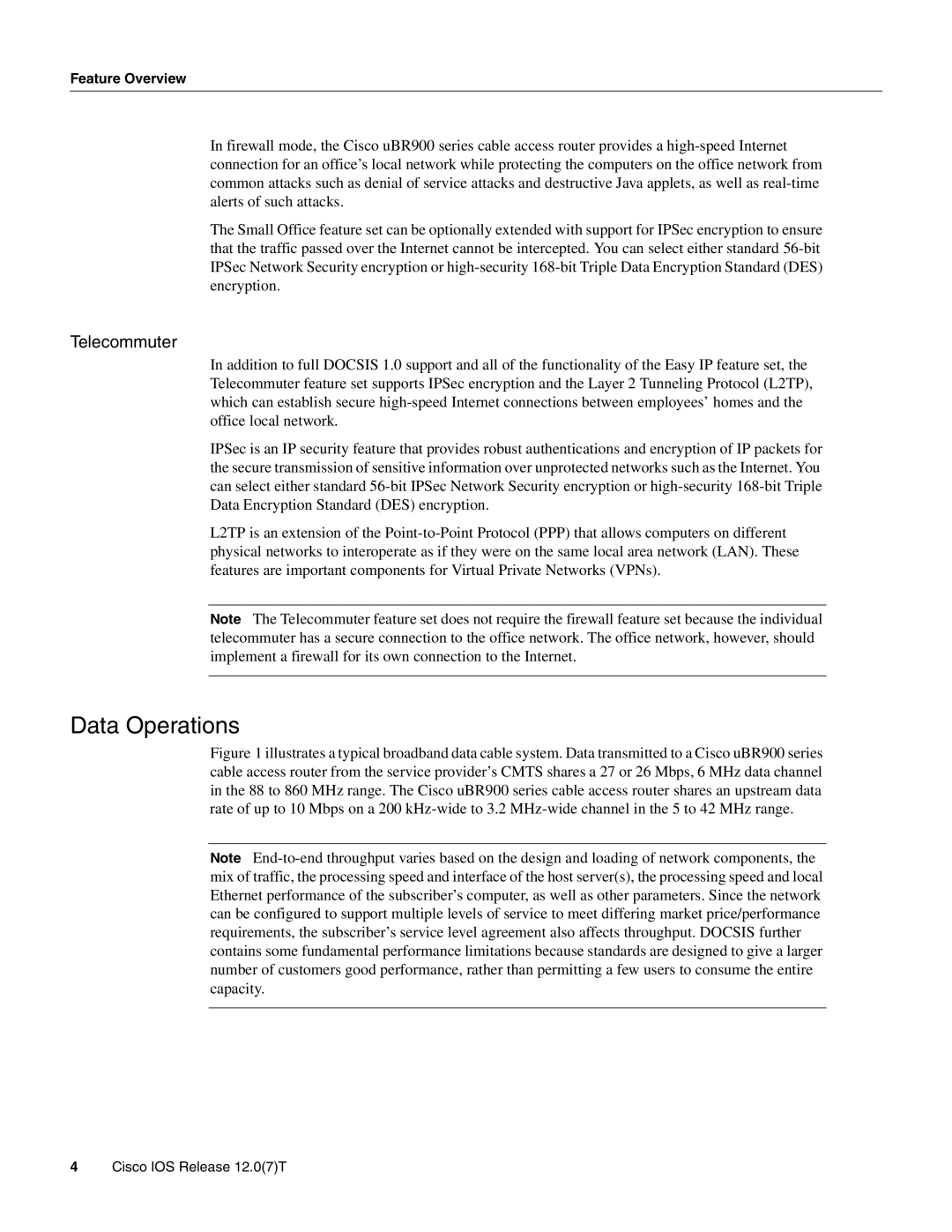
Feature Overview
In firewall mode, the Cisco uBR900 series cable access router provides a
The Small Office feature set can be optionally extended with support for IPSec encryption to ensure that the traffic passed over the Internet cannot be intercepted. You can select either standard
Telecommuter
In addition to full DOCSIS 1.0 support and all of the functionality of the Easy IP feature set, the Telecommuter feature set supports IPSec encryption and the Layer 2 Tunneling Protocol (L2TP), which can establish secure
IPSec is an IP security feature that provides robust authentications and encryption of IP packets for the secure transmission of sensitive information over unprotected networks such as the Internet. You can select either standard
L2TP is an extension of the
Note The Telecommuter feature set does not require the firewall feature set because the individual telecommuter has a secure connection to the office network. The office network, however, should implement a firewall for its own connection to the Internet.
Data Operations
Figure 1 illustrates a typical broadband data cable system. Data transmitted to a Cisco uBR900 series cable access router from the service provider’s CMTS shares a 27 or 26 Mbps, 6 MHz data channel in the 88 to 860 MHz range. The Cisco uBR900 series cable access router shares an upstream data rate of up to 10 Mbps on a 200 kHz-wide to 3.2 MHz-wide channel in the 5 to 42 MHz range.
Note
4Cisco IOS Release 12.0(7)T
